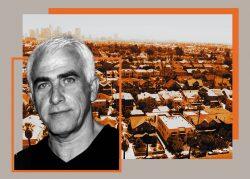A church-owned site in South L.A. has hit the market without a price, but adds an interesting nine acre developable to an emerging spot in the city.
Its exact owner is unclear, but it’s clear they see value in unloading the property now. “Seller will meet the market,” its CBRE listing states.
The property is located at 7833 South Vermont Avenue, on a stretch of the main artery characterized by low-rise commercial buildings that include a hair supplier, auto glass store and laundromats, as well as a fire station and several churches. It is zoned R4/C2, allowing high-density residential and commercial use.
The site itself is around 380,000 square feet, or 8.8 acres, and currently occupied by five structures: Four of those buildings are currently used as classrooms, offices and storage, according to the listing, and one is a parking structure that can fit more than 750 cars — “a potential saving [of] 10’s of millions of dollars in construction and permitting costs, should it be re-incorporated to the developer’s vision.”
It’s not clear whose vision that may end up being, but the property is located in an often overlooked swath of L.A., a few miles south of Downtown and USC, that seems primed for fresh commercial redevelopment. Vermont Avenue, which runs north-south for over 20 miles, from Griffith Park to San Pedro, is one of the region’s busiest corridors and could soon see new bus-only lanes, along with an eventual metro line.
South L.A., the area around the nine-acre site, has also seen some recent high-profile activity: In January Archeon Group moved to buy a city-owned lot on South Broadway, a couple miles to the southeast, in order to build a seven-story mixed use project with a grocery store and 180 apartments. Markwood Enterprises is also building a workforce housing complex in the area.
A few miles to the west, though, around Inglewood and Crenshaw, a frenzy driven by new stadiums, a new metro line and CIM Group has already been underway for years, rapidly transforming a part of historically Black L.A. That activity is likely to continue, with potential implications for the Vermont corridor as well.
Read more



